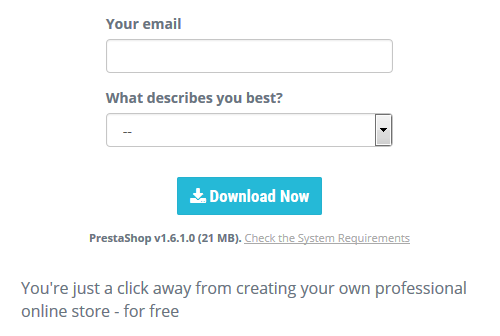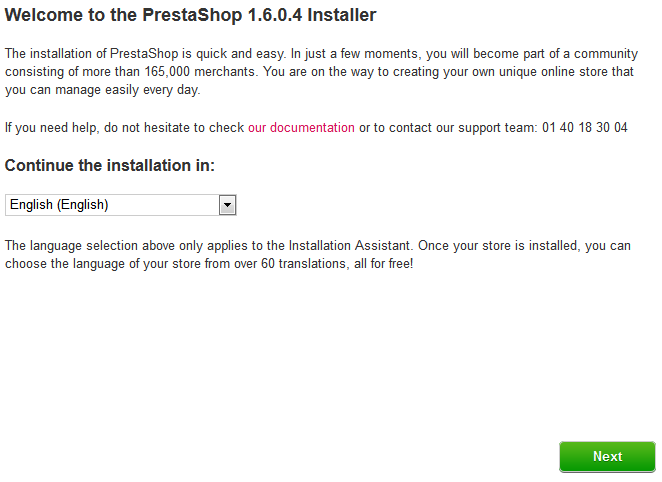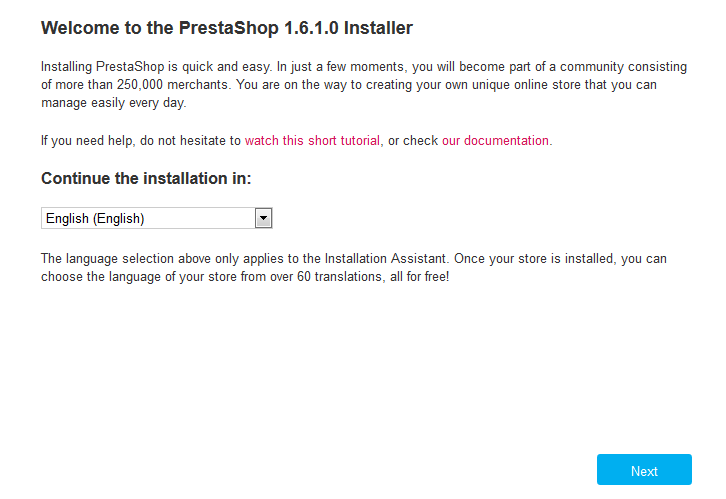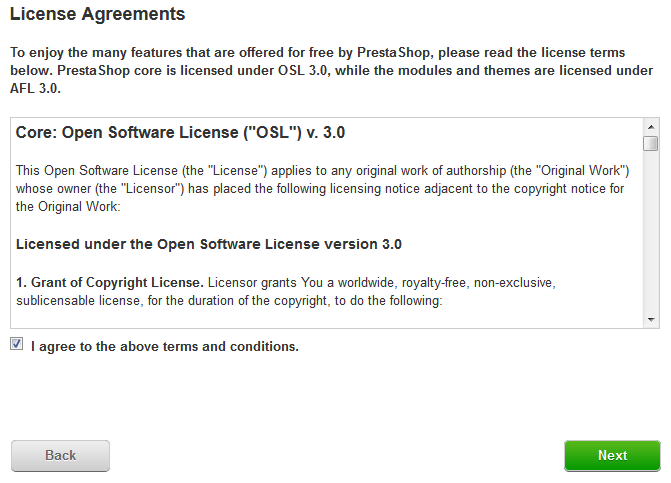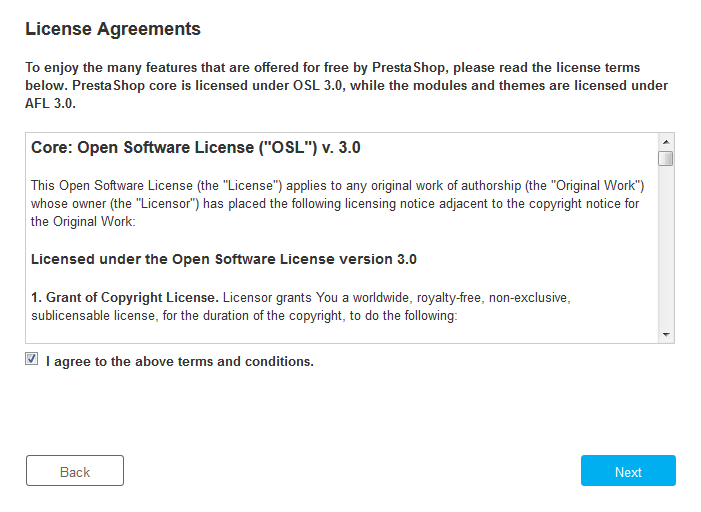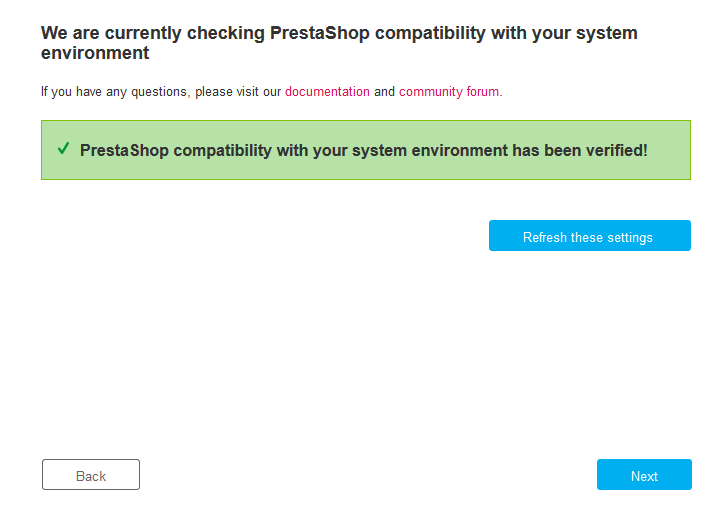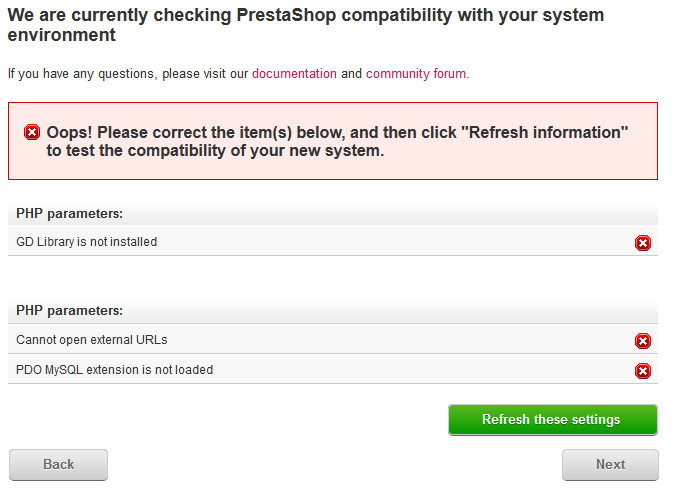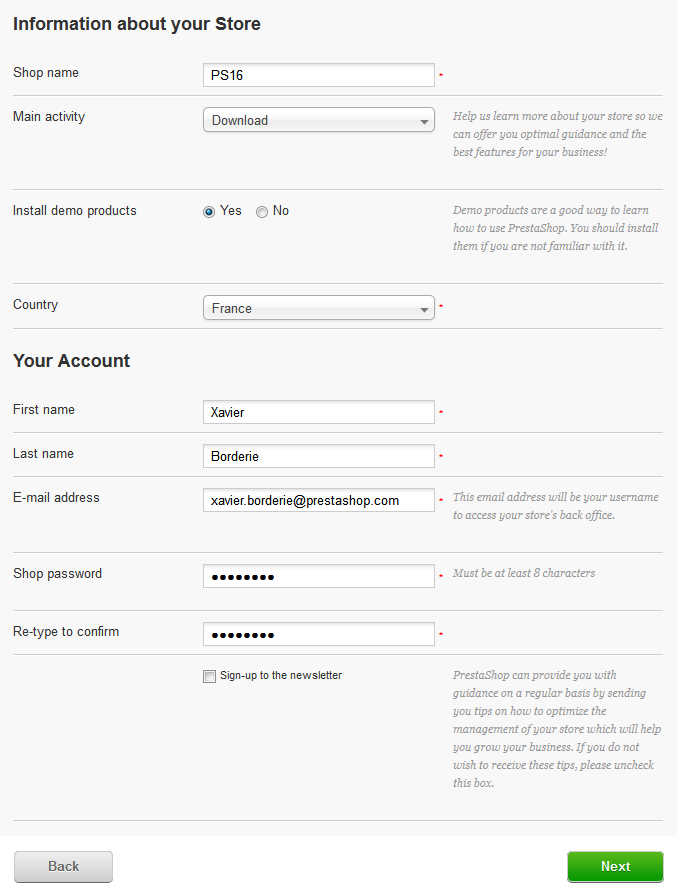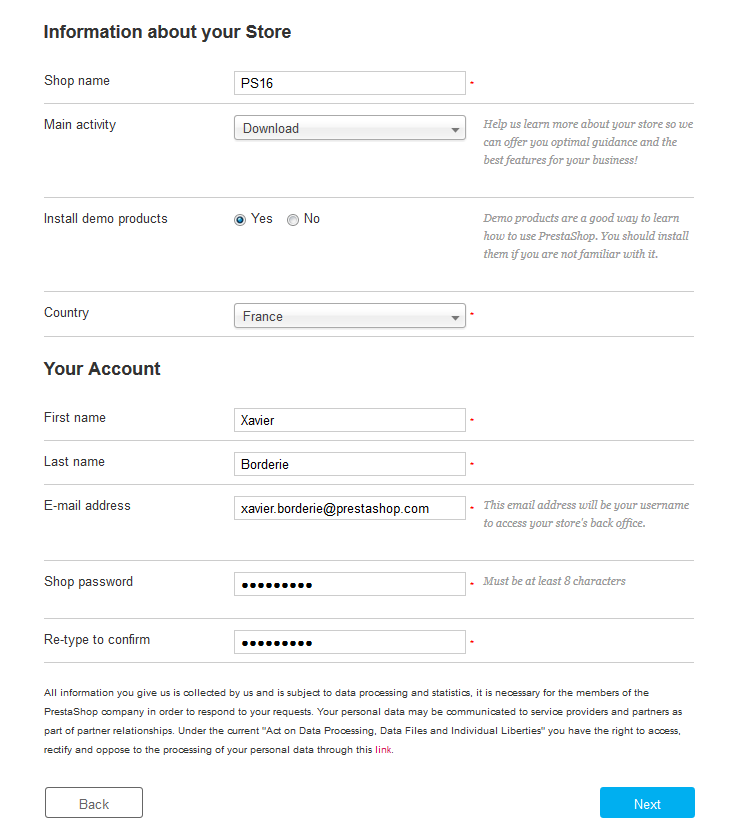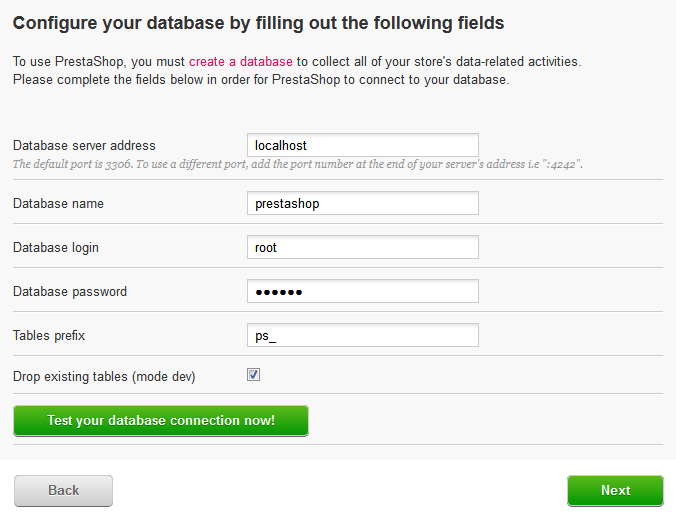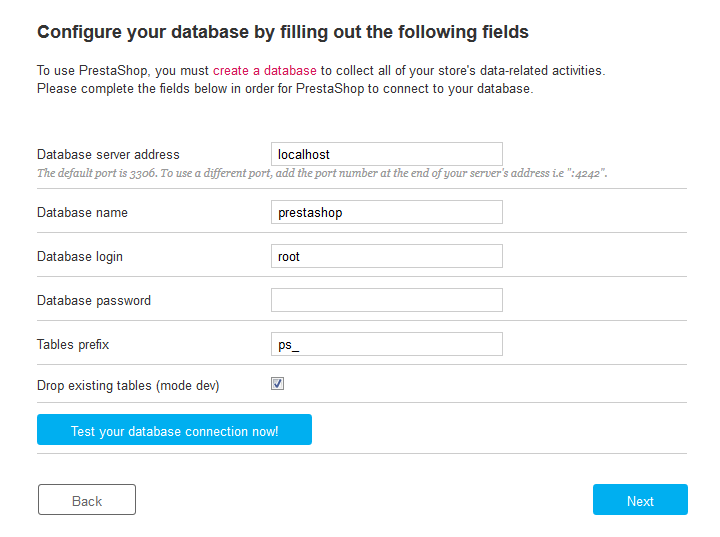...
You can download the latest version of PrestaShop at http://www.prestashop.com/en/download.
You only have one download option: the latest stable version, ready for all kinds of online stores.
...
There are 6 steps. At the top of the page, the installation assistant gives you a visualization of where you are in the process: the gray faces circles turn into smiling faces green check marks after each step that is completed.
Step 1: Welcome page
This page is a quick intro into the installation process. You can choose the language in which the installer will display its instructions.
You also get a link to the documentation site (http://doc.prestashop.com/), and the PrestaShop support phone number. You can learn more about our support service by going to http://support.prestashop.com/en/.
...
- Open Software License 3.0 for PrestaShop itself, which you can also read at http://www.opensource.org/licenses/OSL-3.0.
- Academic Free License 3.0 for the modules and themes, which you can also read at http://opensource.org/licenses/AFL-3.0.
You must agree to both licenses in order to install PrestaShop.
...
This page checks that everything is OK with your server configuration: PHP settings, permissions on files and folders, third-party tools, etc.
If anything goes wrong, the installer stops you here, enabling you to see the few technical details that need fixing, be it changing the PHP configuration or updating the file permissions.
Here is a list of the checks that are performed during this third step:
...
While changing permissions in your FTP client, you should regularly check that you have made the correct changes by running the installer's compatibility checks again: click the installer's "Refresh these settings" button as often as necessary.
Once all indicators are green, you can click "Next". If you cannot have them all green, at least make sure the installer displays the "PrestaShop compatibility with your system environment has been verified!" message at the top of the page.
...
Store information
This is where you can start customizing your shop: give it a name and a logo, indicate its main activity, and indicate the personal information for the shop owner (which has legal binding in most countries)...
| Warning |
|---|
Do not use a colon in your store's name, as it might prevent some feature from working (for instance, e-mail sending might fail). You can replace the colon with a dash if you need to have two sections in the title. For instance, use "MyStore – The best place for items to buy" instead of "MyStore: The best place for items to buy". |
Concerning the logo, you should note that it will appear:
- On all of the pages of your store (depending on your theme).
- In your back office.
- In all of the e-mails sent to your customers.
- In all of your contractual documents (bills, return authorizations, etc.).
Therefore, do not keep the default PrestaShop logo, for obvious reasons.
This is also where you choose the password to log in to the administration panel of your shop - choose wisely so that you will remember it, but make sure it is secure too!
Click "Next" to continue.
...
This page contains a form that enables you to tell PrestaShop where the database server is, and which database it should use, along with a few other details. All this information should have been provided to you by your web host.
Fill all the fields with the database connection information provided by your web-host:
...
Click "Next": the install will start configuring your shop, creating and populating the database tables, etc. This might take a few minutes: please be patient and do not touch your browser!
The installer does the following:
...
As you can read right on the final page of the installation process, there are a couple of last actions to perform before you can leave the installer.
An easy way to improve your installation's security is to delete some key files and folders. This is done using your FTP client, directly on the server. The items to delete are:
...

